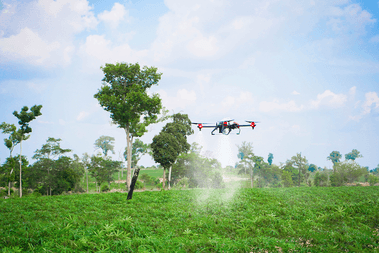Sure! Please provide the date you’d like me to rewrite in day-month-year format.
Key Takeaways
- Drone technology is reshaping cassava farming in Cambodia by enhancing yields and reducing costs.
- With drones, farmers are experiencing a significant reduction in labor time and chemical use.
- Innovative applications of drone technology can help farmers increase efficiency and profits while minimizing health risks.
- The Royal Government of Cambodia is supporting the advancement of the cassava industry as outlined in their National Cassava Policy for 2020-2025.
On June 7, 2022, in Siem Reap, Cambodia, a wave of innovation has begun to transform the cassava industry, a primary source of income for many rural families. The introduction of drone technology promises to modernize farming practices and enhance productivity for small-scale farmers. Recognized as a vital agro-industrial crop in Cambodia, cassava not only provides jobs but also forms a significant part of the national economy, contributing around 4% to the country’s GDP growth.
A Leap Towards Efficiency
Cassava fields cover more than 600,000 hectares across Cambodia, trailing only rice paddy in cultivation area. Despite its significance, traditional farming methods are often labor-intensive and time-consuming. As demand for cassava-based products, including food, flour, and alcohol, continues to increase, farmers like Chhay Thi, who oversees 20 hectares in Siem Reap Province, are embracing advanced techniques like those offered by XAG, an agricultural drone company. In collaboration with local partners such as Red Sparrow Cambodia, Chhay has experimented with autonomous weeding technologies on his fields, marking a significant move towards modernization.
“XAG’s agricultural drones enable a level of efficiency that we have never experienced before,” Chhay remarked during a demonstration on his cassava crop.
Pioneering New Practices

Drone technology is elevating the efficiency of cassava farming.
Unlike traditional agricultural machinery which can be cumbersome, XAG’s drones offer ease of transportation and rapid deployment. After loading the drone’s liquid tank with herbicide, the operator commands the device to take off via a mobile application. The drone then autonomously navigates through the cassava fields, completing the task of herbicide application over 8 hectares in a mere hour, a task that previously required over a week of manual labor.
Cost-Effective Solutions
Paying for manual labor can escalate costs for farmers to $18-25 per hectare. This financial burden is compounded during peak planting seasons when labor demand spikes, making it challenging for farmers to keep up. In contrast, utilizing drones not only curtails labor expenditures considerably but also reduces chemical usage by 10-30%. “Having a drone during the peak season can save me $8-10 for every hectare,” Chhay Thi explained, emphasizing the benefits of deployment.

Farmers are enhancing drone capabilities with smart liquid tanks for increased efficiency.
A Healthier Alternative
The precision spraying capabilities of drones also mitigate the health hazards associated with traditional methods. The drone’s aerial application reduces farmers’ exposure to harmful chemicals, promoting a safer working environment. Traditional methods often require farmers to traverse overgrown fields, which poses risks of chemical inhalation and potential poisoning.
“As we embrace this technology, it’s not just about scaling up production; it’s also about safeguarding the health of our farmers,” Chhay affirmed, highlighting the dual benefits of increased productivity and better health outcomes.

An XAG drone demonstrates autonomous spraying capabilities.
With cassava production being a key driver of Cambodia’s agricultural economy, the Royal Government is actively supporting advancements in the industry, as detailed in the “National Cassava Policy 2020-2025.” As Cambodia seeks to position itself as a hub for cassava production and processing, drone technology represents a critical step forward in ensuring sustainable growth and improved livelihoods for farmers.


